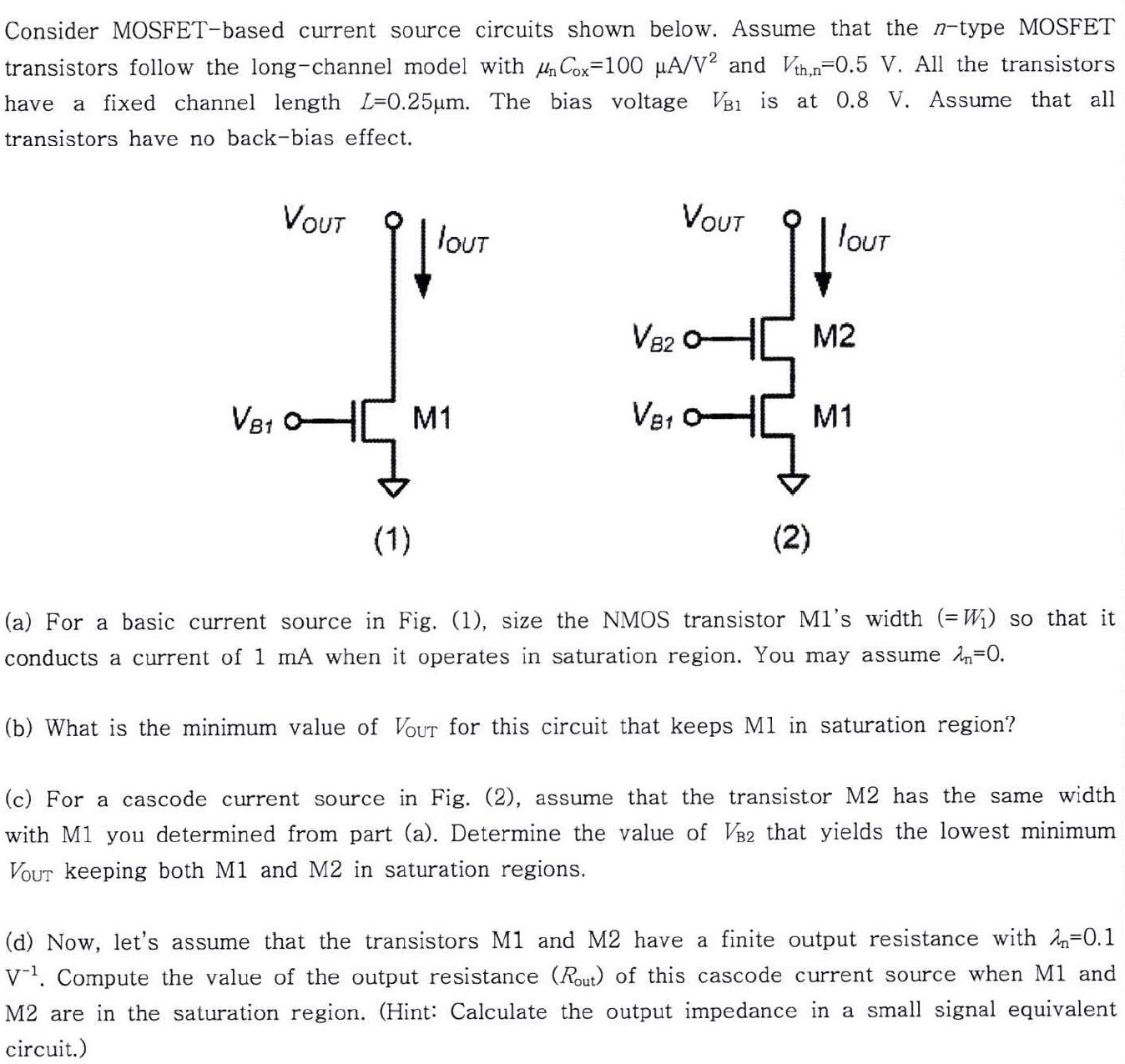Consider MOSFET-based current source circuits shown below. Assume that the n-type MOSFET transistors follow the long-channel model with μnCox = 100 μA/V2 and Vth,n = 0.5 V. All the transistors have a fixed channel length L = 0.25 μm. The bias voltage VB1 is at 0.8 V. Assume that all transistors have no back-bias effect. (1) (2) (a) For a basic current source in Fig. (1), size the NMOS transistor M1's width ( = W1) so that it conducts a current of 1 mA when it operates in saturation region. You may assume λn = 0. (b) What is the minimum value of Vout for this circuit that keeps M1 in saturation region? (c) For a cascode current source in Fig. (2), assume that the transistor M2 has the same width with M1 you determined from part (a). Determine the value of VB2 that yields the lowest minimum VOUT keeping both M1 and M2 in saturation regions. (d) Now, let's assume that the transistors M1 and M2 have a finite output resistance with λn = 0.1 V−1. Compute the value of the output resistance (Rout) of this cascode current source when M1 and M2 are in the saturation region. (Hint: Calculate the output impedance in a small signal equivalent circuit.)
